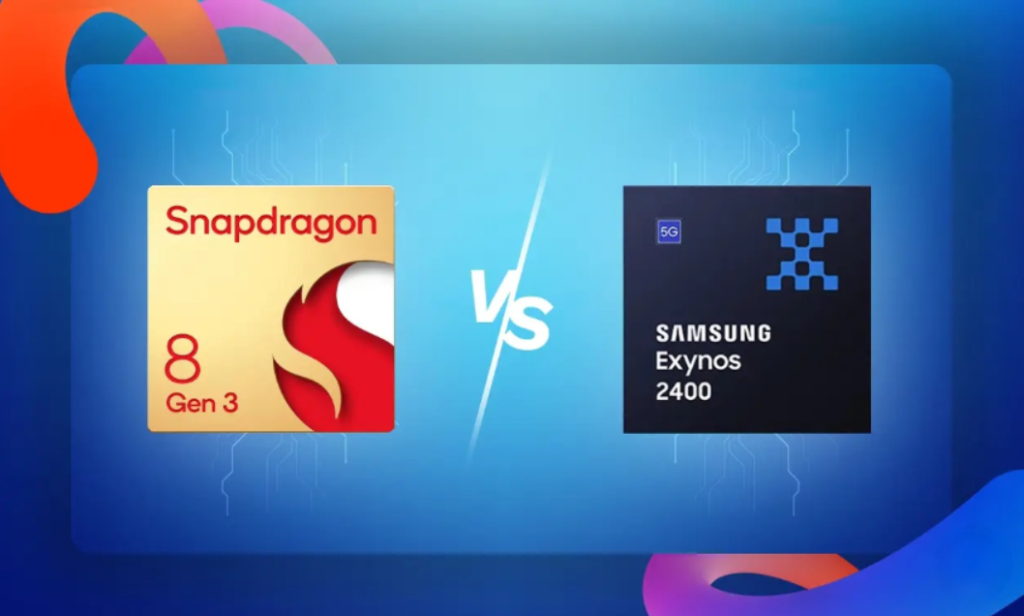
Samsung’s latest flagship mobile chipset, the Exynos 2400, has been unveiled alongside the Galaxy S24 series, marking a return after a two-year hiatus. Set to power the standard Galaxy S24 and Galaxy S24+ in most global regions (excluding the U.S. and Canada), the Galaxy S24 Ultra, on the other hand, will feature the Snapdragon 8 Gen 3 chipset worldwide. If you’re curious about the differences between the Exynos 2400 and Snapdragon 8 Gen 3, and whether they deliver similar performance, we’ve conducted a thorough comparison to provide you with insights. Let’s explore the specifics without any delay.
Exynos 2400 vs Snapdragon 8 Gen 3: Specifications Differences
Certainly, please provide the key specifications for the Exynos 2400 and Snapdragon 8 Gen 3, and I’ll help highlight the differences between the two chipsets.

Exynos 2400 vs Snapdragon 8 Gen 3: CPU Differences
The Exynos 2400, developed by Samsung Semiconductor and utilizing the enhanced 4nm LPP+ process technology, represents the third iteration of Samsung’s 4nm process node. Notably, the 4nm LPP+ fabrication process is now believed to be on par with TSMC’s 4nm process node.

In terms of CPU architecture, Samsung has opted for a deca-core setup for the Exynos 2400, a configuration uncommon in mobile SoCs. This chipset boasts the latest ARM cores, featuring a tri-cluster design. The CPU configuration includes 1x Cortex-X4 prime core clocked at 3.2GHz, 2x Cortex-A720 cores running at 2.90GHz, another set of 3x Cortex-A720 cores with a slightly lower clock speed at 2.60GHz, and finally, 4x Cortex-A520 small cores operating at 2.0GHz. This intricate arrangement aims to deliver a balance of high-performance and power efficiency in various tasks.

Moving on to the Snapdragon 8 Gen 3, it is crafted on TSMC’s established 4nm process node. In contrast to Samsung’s 10-core CPU approach, Qualcomm has adhered to its conventional octa-core design featuring eight Kryo cores. The CPU architecture comprises a solo Cortex-X4 prime core operating at 3.3GHz, 3x Cortex-A720 cores running at 3.2GHz, 2x Cortex-A720 cores clocked at 3.0GHz, and 2x Cortex-A520 cores with a clock speed of 2.3GHz.
A notable difference lies in the clock speeds, with Qualcomm achieving a peak frequency of 3.3GHz, surpassing Exynos’ peak frequency by 100MHz. For the A720 cores, Qualcomm has raised the clock speed from 300MHz to 400MHz, a similar trend seen in the little A520 cores. This suggests that the CPU of the Snapdragon 8 Gen 3 is poised to deliver greater power compared to the Exynos 2400’s CPU.
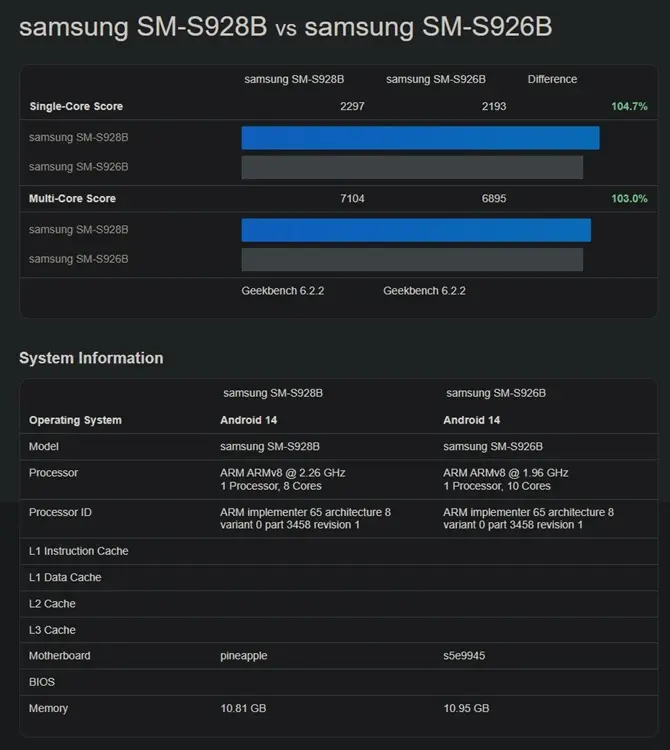
Examining the leaked Geekbench 6 scores, the performance distinction becomes evident. In the single-core test, the Exynos 2400 achieved a score of 2,193, and in the multi-core test, it scored 6,895. On the other hand, the S24 Ultra powered by the Snapdragon 8 Gen 3 recorded 2,297 in the single-core test and 7,104 in the multi-core test.
The marginal performance difference suggests that Samsung has made significant strides with the Exynos 2400, making it a more competitive player. It’s no longer a one-sided competition.
Additionally, Samsung has implemented a new Fan-Out Wafer-Level Packaging (FOWLP) method in the Exynos 2400 SoC, aiming to enhance thermal management. Despite featuring a larger 10-core CPU, Samsung may not have surpassed Qualcomm just yet. However, the Exynos 2400 stands as a promising chipset, closely trailing the Snapdragon 8 Gen 3, marking a noteworthy improvement.
Exynos 2400 vs Snapdragon 8 Gen 3: GPU Differences
As per Samsung, the standout feature of the Exynos 2400 is its Xclipse 940 GPU. Built on the AMD RDNA 3 architecture, this GPU incorporates six cores and introduces hardware-accelerated ray tracing support, akin to the Adreno 750 GPU found in the Snapdragon 8 Gen 3.
The inclusion of hardware-accelerated ray tracing enhances gaming by creating a more immersive experience, introducing realistic lights, reflections, and shadows for heightened visual quality.

Samsung claims that the Xclipse 940 GPU outperforms its predecessor, the Xclipse 920 GPU, by a remarkable 70%, signifying a substantial improvement. Moreover, the GPU is designed to handle QHD+ screens at a refresh rate of 144Hz and 4K screens at 120Hz, showcasing its capability to deliver smooth and high-quality visuals on advanced displays.
In contrast, Qualcomm boasts one of the premier GPUs in the smartphone realm, even surpassing Apple’s latest A-series chipset. The Adreno 750 GPU integrated into the Snapdragon 8 Gen 3 is a powerhouse, excelling in both performance and efficiency. Notably, its prowess in hardware-accelerated ray tracing is enhanced by Global Illumination support. Beyond that, the Adreno 750 can upscale gaming scenes up to 4K and is compatible with Unreal Engine 5.2.

While the newly introduced Xclipse 940 GPU on the Exynos 2400 appears promising on paper, a comprehensive evaluation awaits further tests, including its performance in gaming scenarios and synthetic benchmark assessments (currently in progress and forthcoming). Following these examinations, a definitive verdict can be provided regarding where the Exynos 2400 stands in comparison to the Adreno 750 GPU on the Snapdragon 8 Gen 3.
Exynos 2400 vs Snapdragon 8 Gen 3: NPU (AI and ML) Differences
Samsung has once again demonstrated significant progress in the NPU (Neural Processing Unit) domain. The Exynos 2400 is equipped with a new AI engine that boasts an impressive 14.7 times improvement in speed compared to the last-generation NPU featured in the Exynos 2200, a remarkable advancement over just two years.
The NPU on the Exynos 2400 comprises 2-GNPU and 2-SNPU, collectively capable of executing 17,000 MAC (Multiply-Accumulate) operations. While Samsung hasn’t provided a specific TOPS (Tera Operations Per Second) figure for its NPU, Dr. Ian Cutress suggests it could be around 44 TOPS.
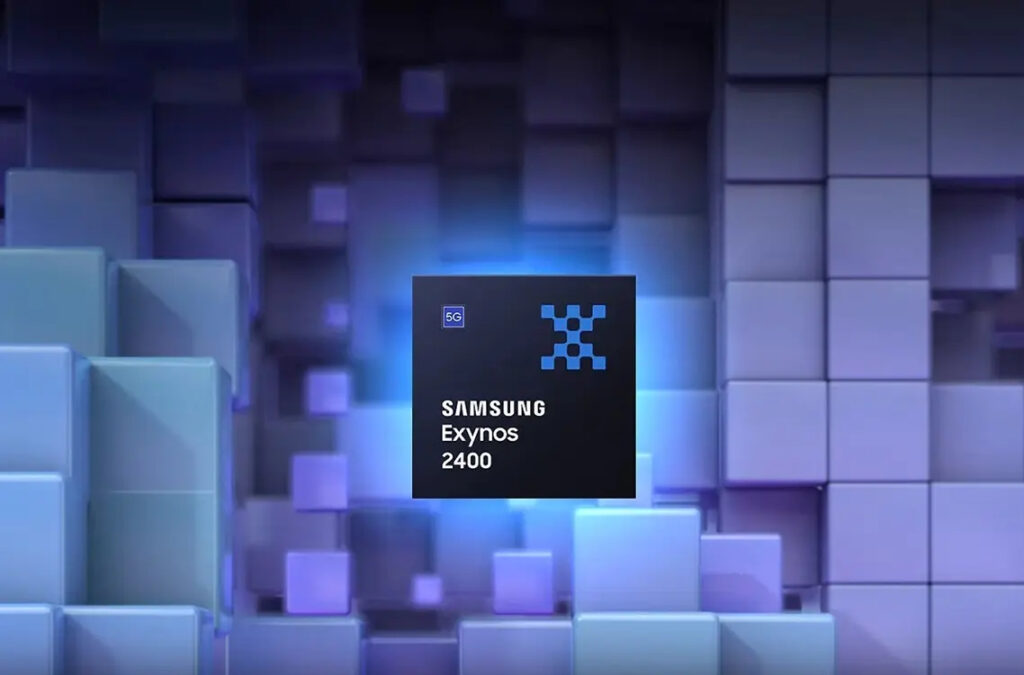
This powerful NPU is well-suited for on-device AI tasks, including but not limited to image generation, real-time translation, object recognition, and AI-powered generative fill. Samsung’s commitment to making all AI features available across both Snapdragon and Exynos variants of the S24 series emphasizes the versatility and capabilities of this advanced NPU technology.
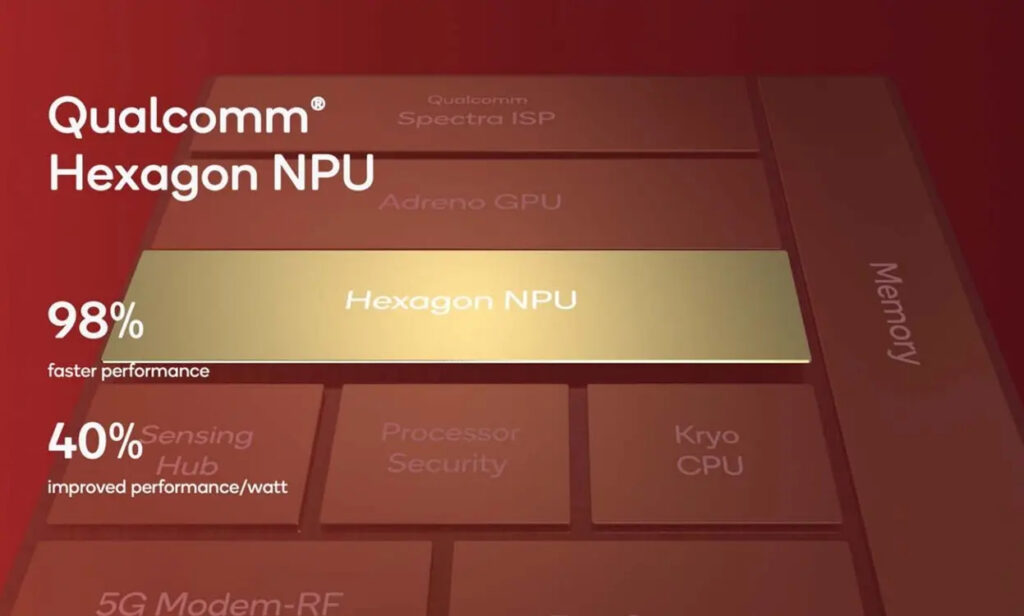
As for the AI Engine on the Snapdragon 8 Gen 3, it features a robust Hexagon NPU (Neural Processing Unit) capable of handling various on-device AI tasks, including local execution of models ranging from 3 billion to 10 billion parameters. This AI engine can swiftly generate images in just 1 second, perform real-time translation, process multi-modal data, and execute semantic segmentation. The Hexagon AI Engine exhibits a formidable performance, delivering 45 TOPS (Tera Operations Per Second) and achieving the generation of up to 20 tokens per second, showcasing its speed in the realm of mobile SoCs.
Qualcomm has established itself as a leader in AI mobile computing, but the extent to which Samsung has narrowed the gap with its significantly improved NPU on the Exynos 2400 remains to be seen. Stay tuned as we bring you AI benchmark results for the Exynos 2400, providing a comprehensive comparison of the two chipsets.
Exynos 2400 vs Snapdragon 8 Gen 3: ISP Comparison
Regarding imaging capabilities, the Exynos 2400 features a proficient ISP supporting image sensors of up to 320MP. It excels in capturing single-camera images at a resolution of 320MP. Additionally, the ISP enables ZSL (Zero Shutter Lag) shots, reaching up to 108MP at a smooth 30FPS.
It also supports ZSL dual-camera mode, offering resolutions of 64MP and 32MP. On the video front, the chipset exhibits robust capabilities, supporting 8K video recording at 30FPS with the VP9 codec.

Qualcomm’s Snapdragon 8 Gen 3 is equipped with a potent Spectra ISP, utilizing Cognitive and triple-ISP architecture. It demonstrates the capability to capture images with resolutions of up to 200MP in single-camera mode and up to 108MP with ZSL (Zero Shutter Lag). The ISP also supports ZSL dual-camera mode, providing resolutions of up to 64MP and 36MP. Similar to the Exynos 2400, the SD8Gen3 can record 8K videos at 30FPS.
Considering the on-paper specifications, both ISPs exhibit robust and evenly matched capabilities. Samsung has notably developed a formidable ISP for the Exynos 2400, contributing to the overall strength of the chipset as a comprehensive and versatile package.
Exynos 2400 vs Snapdragon 8 Gen 3: Connectivity Comparison
Surprisingly, Samsung has integrated a robust 5G modem into its Exynos 2400 chipset. This modem boasts impressive download speeds of up to 12.1 Gbps and upload speeds reaching 3.67 Gbps when utilizing mmWave 5G bands. In the sub-6GHz 5G band, the download speed can reach up to 9.64 Gbps, and the upload speed can achieve up to 2.55 Gbps. Beyond 5G connectivity, the Exynos 2400 also supports Bluetooth 5.3, Wi-Fi 6E, and features AV1 codec support.
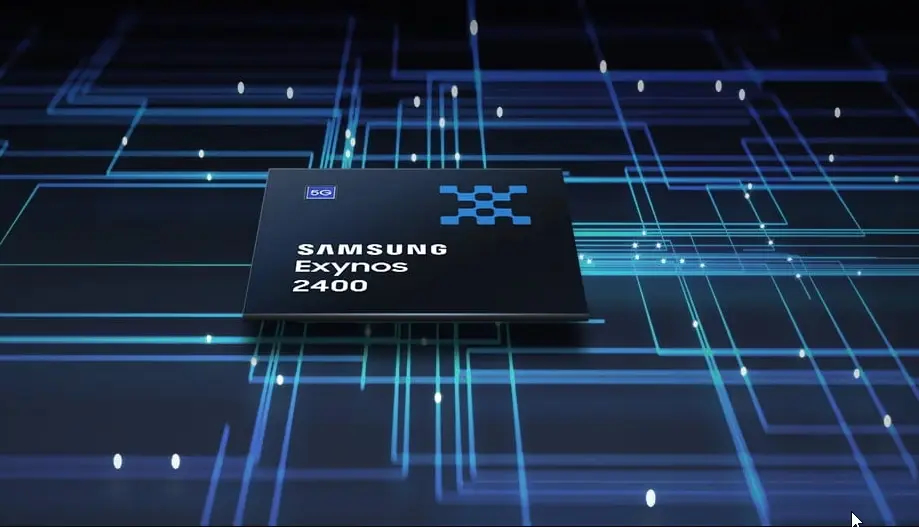
Conversely, the Snapdragon 8 Gen 3 is equipped with the X75 5G modem, delivering peak download speeds of up to 10 Gbps and upload speeds of up to 3.5 Gbps. This chipset also supports Wi-Fi 7, Bluetooth 5.4, and includes AV1 encoding and decoding support.
Exynos 2400 vs Snapdragon 8 Gen 3: Final Verdict
In conclusion, Samsung’s latest Exynos 2400 chipset, developed by Samsung Foundry, presents a promising mobile SoC with significant improvements across various dimensions. It demonstrates competitive CPU performance when compared to the Snapdragon 8 Gen 3, and the GPU exhibits notable power, although thorough testing is needed for a comprehensive evaluation. The NPU showcases remarkable upgrades, the ISP is on par, and the 5G modem ensures capable connectivity.
While the Exynos 2400 may not outperform the Snapdragon 8 Gen 3, the gap between the two chipsets is relatively narrow. Further testing on devices powered by the Exynos 2400 and Snapdragon 8 Gen 3, such as the Galaxy S24 Plus, will provide a clearer understanding of their performance and efficiency differences.
What are your thoughts on Samsung’s flagship SoC, the Exynos 2400? Let us know in the comments below.

I simply could not go away your web site prior to suggesting that I really enjoyed the standard info a person supply on your guests Is going to be back incessantly to investigate crosscheck new posts